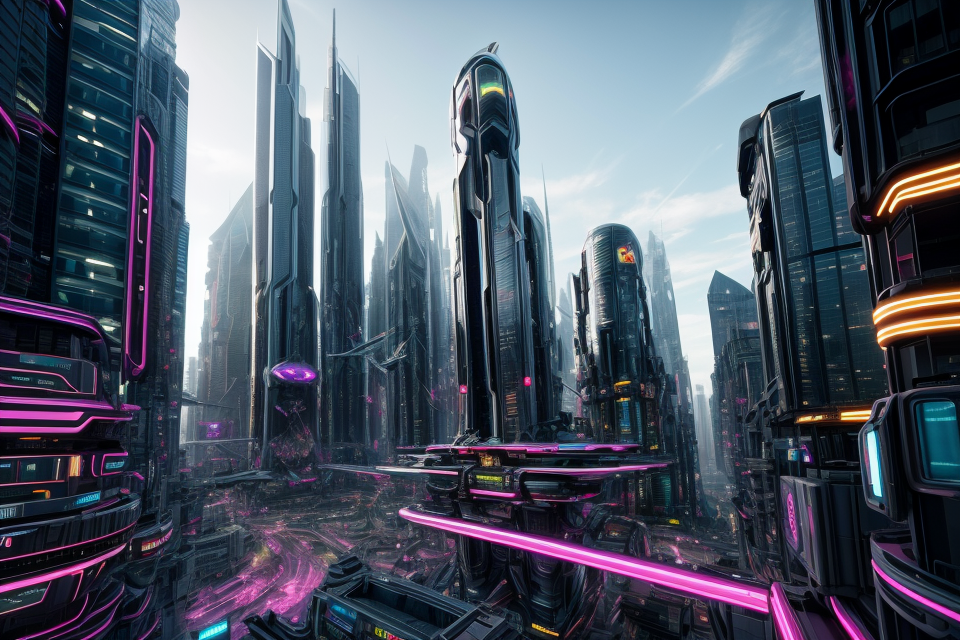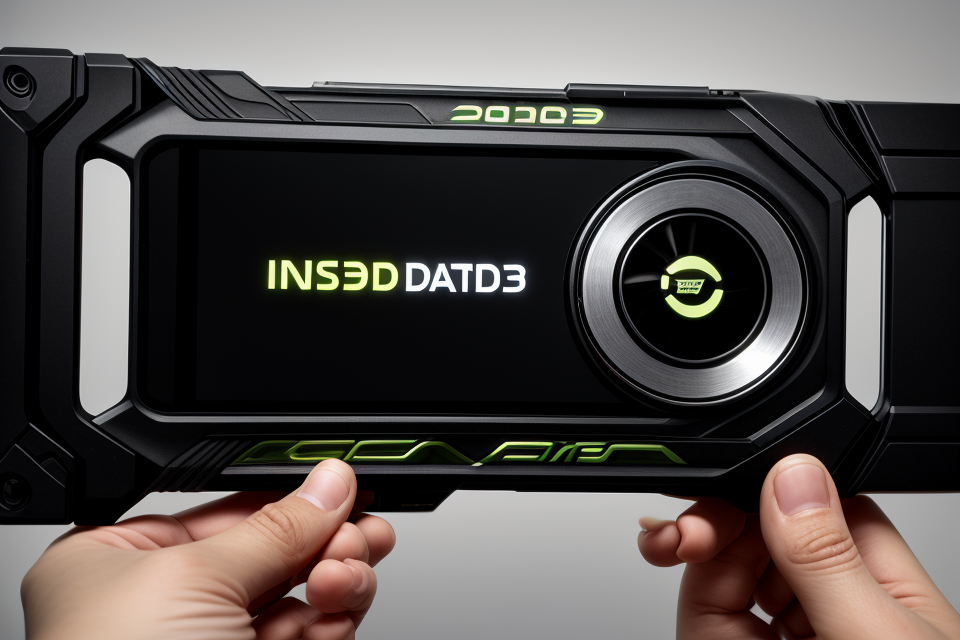
The world of gaming is always buzzing with new technologies and advancements. Two such technologies that have been making waves in recent times are DLSS (Deep Learning Super Sampling) and ray tracing. Both of these technologies aim to enhance the visual experience of gamers, but the question remains – which one is better? In this article, we will explore the debate between DLSS and ray tracing, and try to determine which one offers the best gaming experience. So, let’s dive in and find out!
Understanding DLSS and Ray Tracing
What is DLSS?
DLSS, or Deep Learning Super Sampling, is a technology used in computer graphics to improve the visual quality of images while maintaining high performance. It works by using deep learning algorithms to upscale lower resolution images to higher resolutions, resulting in sharper and more detailed visuals.
How it works
DLSS works by using a neural network to analyze the input image and generate a higher resolution output. The neural network is trained on a large dataset of images and uses this knowledge to interpolate missing details in the lower resolution image. The process involves several iterations of upscaling and refinement, resulting in a higher resolution image that retains the quality of the original image.
Advantages and disadvantages
One of the main advantages of DLSS is its ability to improve visual quality while maintaining high performance. This is particularly important for gaming, where high frame rates are critical for a smooth gaming experience. Additionally, DLSS can be more efficient than traditional upscaling methods, as it uses deep learning algorithms to optimize the image quality.
However, there are also some disadvantages to DLSS. One of the main issues is that it requires a powerful GPU to run effectively, which can be a barrier for some users. Additionally, DLSS may not always produce the same level of quality as traditional upscaling methods, particularly for certain types of images.
What is Ray Tracing?
Ray tracing is a technique used in computer graphics to generate realistic lighting and shadows in images. It simulates the way light behaves in the real world, taking into account the characteristics of light sources, reflective surfaces, and transparency.
How it works:
Ray tracing starts with a virtual camera that emits rays of light. These rays bounce off objects in the scene and are traced as they move through the virtual environment. The algorithm calculates how light interacts with surfaces and objects, taking into account factors such as surface roughness, reflections, and refractions. This information is then used to determine the final color and brightness of each pixel in the image.
Advantages:
One of the main advantages of ray tracing is its ability to produce highly realistic lighting and shadows. It can also handle complex scenes with multiple light sources and reflections, which can be difficult to simulate using other techniques. Additionally, ray tracing can be used to create advanced visual effects such as reflections, refractions, and volumetric lighting.
Disadvantages:
Despite its many advantages, ray tracing also has some limitations. One of the main drawbacks is its computational complexity, which can make it difficult to implement in real-time applications. Additionally, ray tracing can struggle with scenes that contain a large number of objects or complex geometry, as it can be difficult to trace all of the rays in such environments.
Overall, ray tracing is a powerful technique for generating realistic lighting and shadows in computer graphics, but it can be computationally intensive and may struggle with complex scenes.
Comparing DLSS and Ray Tracing
When deciding between DLSS and ray tracing, it is essential to consider factors such as budget and hardware capabilities, personal preferences and gaming needs, and future-proofing. Both technologies can provide stunning visuals and enhance the gaming experience, but their specific strengths and weaknesses will depend on the specific implementation and hardware used. Therefore, it is crucial to evaluate the options carefully before making a decision.
Performance
Frame rates and image quality
One of the most critical factors in determining the superiority of DLSS over ray tracing is their impact on frame rates and image quality. In general, both DLSS and ray tracing are designed to enhance the visual experience of video games by improving image quality and reducing the load on the graphics processing unit (GPU). However, their approaches to achieving this goal differ significantly.
While ray tracing uses advanced algorithms to simulate the behavior of light in a virtual environment, DLSS leverages machine learning to optimize the image quality without the need for complex calculations. This means that DLSS can often achieve similar or even better image quality than ray tracing, while requiring significantly less computational resources.
How DLSS and ray tracing affect performance
In terms of performance, DLSS and ray tracing have a significant impact on the overall gaming experience. DLSS can help to improve frame rates by reducing the workload on the GPU, which can lead to smoother gameplay and a more responsive experience. On the other hand, ray tracing can also improve image quality, but it can also lead to a significant decrease in frame rates, which can result in a less responsive and less enjoyable gaming experience.
The performance impact of DLSS and ray tracing depends on several factors, including the hardware of the gaming system, the complexity of the game being played, and the settings being used. For example, in games with high levels of detail and complex lighting effects, ray tracing may be necessary to achieve the desired image quality, but it may also have a significant impact on frame rates.
Real-world examples and benchmarks
Real-world benchmarks have shown that DLSS and ray tracing can have a significant impact on the performance of gaming systems. For example, in one benchmark, a game was tested with both DLSS and ray tracing enabled, and the results showed that DLSS was able to achieve higher frame rates than ray tracing while still maintaining similar levels of image quality.
Another benchmark tested the performance of a gaming system with both DLSS and ray tracing disabled, and the results showed that the system was able to achieve higher frame rates than when either feature was enabled. This highlights the fact that both DLSS and ray tracing can have a significant impact on the performance of gaming systems, and gamers need to carefully consider the trade-offs between image quality and performance when choosing which feature to enable.
Overall, the performance of DLSS and ray tracing depends on a variety of factors, and gamers need to carefully consider their hardware, the complexity of the game being played, and their personal preferences when deciding which feature to enable. While both DLSS and ray tracing can have a significant impact on the gaming experience, they are not always mutually exclusive, and gamers may need to make trade-offs between image quality and performance depending on their specific needs.
Visual Quality
Image Sharpness and Detail
One of the key areas where DLSS and ray tracing differ is in their ability to render images with high sharpness and detail. While both techniques can produce stunning visuals, the level of detail they achieve varies depending on the specific implementation and hardware used.
Reflections, Shadows, and Lighting
Another important factor in the visual quality of graphics is the realism of reflections, shadows, and lighting. Both DLSS and ray tracing have the potential to create highly realistic lighting effects, but again, the specific implementation and hardware used can make a significant difference in the quality of these effects.
Comparison of DLSS and Ray Tracing Effects
When comparing the effects of DLSS and ray tracing, it’s important to note that the two techniques are not directly comparable. DLSS is an upscaling technique that uses AI to improve the quality of lower-resolution images, while ray tracing is a rendering technique that simulates the behavior of light in a scene to create more realistic lighting and shadows. As such, the two techniques have different strengths and weaknesses, and the choice between them will depend on the specific needs and goals of the project.
However, in general, ray tracing tends to produce more realistic lighting and shadow effects, while DLSS can produce sharper images with more detail. The specific strengths and weaknesses of each technique will depend on the specific implementation and hardware used, so it’s important to carefully evaluate the options before making a decision.
Compatibility and Support
When it comes to comparing DLSS and ray tracing, one key factor to consider is their compatibility and support. This section will delve into the availability of these technologies, their compatibility with different games and hardware, and any updates or improvements that have been made to enhance their performance.
Availability of DLSS and Ray Tracing
DLSS (Deep Learning Super Sampling) and ray tracing are both advanced technologies that require powerful hardware to run effectively. While DLSS is primarily supported by Nvidia graphics cards, ray tracing is available on both Nvidia and AMD graphics cards. However, the specific features and capabilities of these technologies may vary depending on the hardware and software being used.
Compatibility with Different Games and Hardware
When it comes to compatibility, DLSS is generally more widely supported than ray tracing. This is because DLSS is exclusive to Nvidia graphics cards, and as a result, it is compatible with a wide range of games and hardware that use Nvidia GPUs. In contrast, ray tracing is available on both Nvidia and AMD graphics cards, but it may not be compatible with all games and hardware due to differences in the underlying hardware architecture.
However, it’s worth noting that some game developers have begun to optimize their games for both DLSS and ray tracing, which can help to improve performance and visual quality on a wider range of hardware.
Updates and Improvements
Both DLSS and ray tracing are constantly evolving, with new updates and improvements being made to enhance their performance and capabilities. For example, Nvidia has released several updates to its DLSS technology, which have improved its effectiveness and compatibility with a wider range of games and hardware. Similarly, AMD has released updates to its ray tracing technology, which have improved its performance and efficiency.
In addition, both DLSS and ray tracing are likely to continue to evolve in the future, with new features and capabilities being added to enhance their performance and visual quality. This means that gamers and developers can expect to see ongoing improvements to these technologies in the years to come.
Price and Affordability
When it comes to the cost of DLSS and ray tracing, there are several factors to consider. These include the hardware requirements, the quality of the implementation, and the overall value for money. In this section, we will compare the cost of DLSS and ray tracing to determine which one is more affordable.
DLSS (Deep Learning Super Sampling) is a technology that uses artificial intelligence to improve the visual quality of games and other graphics-intensive applications. It works by using a neural network to upscale lower-resolution images to higher resolutions, resulting in sharper and more detailed visuals. While DLSS can significantly improve the visual quality of games, it requires powerful hardware to run effectively. Specifically, it requires a graphics card with dedicated RT cores and a lot of VRAM. As a result, the cost of implementing DLSS can be quite high.
On the other hand, ray tracing is a technology that simulates the behavior of light in a scene to create more realistic and accurate reflections, refractions, and shadows. It works by tracing the path of light rays as they interact with objects in a scene, resulting in more accurate and natural-looking lighting effects. While ray tracing can provide stunning visuals, it also requires powerful hardware to run effectively. Specifically, it requires a graphics card with dedicated RT cores and a lot of VRAM. As a result, the cost of implementing ray tracing can also be quite high.
In terms of value for money, it is difficult to say which one is more affordable as it depends on several factors. For example, if you already have a powerful graphics card with dedicated RT cores and a lot of VRAM, then adding DLSS or ray tracing may not require a significant investment. However, if you need to upgrade your hardware to run either technology, then the cost may be prohibitive.
Ultimately, the cost of DLSS and ray tracing will depend on your specific needs and budget. However, both technologies can provide stunning visuals and enhance the gaming experience.
Making a Decision
Factors to consider
When deciding between DLSS and ray tracing, several factors must be considered. These factors can help you determine which technology is best suited to your gaming needs and preferences.
- Budget and hardware capabilities:
One of the most critical factors to consider is your budget and hardware capabilities. DLSS and ray tracing require different levels of hardware capabilities, and you need to ensure that your system can handle the technology you choose. For instance, DLSS is more accessible in terms of hardware requirements, as it only requires an NVIDIA GPU, while ray tracing requires a more powerful system. - Personal preferences and gaming needs:
Your personal preferences and gaming needs also play a crucial role in deciding between DLSS and ray tracing. If you prioritize smooth gameplay and fast frame rates, DLSS may be the better option for you. On the other hand, if you prefer realistic lighting and shadows, ray tracing may be the way to go. - Future-proofing:
Another factor to consider is future-proofing. As technology continues to advance, it’s essential to choose a technology that will remain relevant in the future. While both DLSS and ray tracing are cutting-edge technologies, DLSS has the potential to become more advanced in the future, making it a more future-proof option.
In conclusion, there are several factors to consider when deciding between DLSS and ray tracing. By taking these factors into account, you can make an informed decision that meets your gaming needs and preferences.
FAQs
1. What is DLSS and ray tracing?
DLSS (Deep Learning Super Sampling) and ray tracing are two different graphics technologies used in computer graphics. DLSS is a method of upscaling lower resolution images to higher resolutions using deep learning algorithms, while ray tracing is a technique used to simulate the behavior of light in a scene, resulting in more realistic lighting and shadows.
2. Which one is better, DLSS or ray tracing?
The answer to this question depends on personal preference and the specific use case. Both DLSS and ray tracing have their own advantages and disadvantages. DLSS can improve the performance of graphics cards by reducing the workload, while ray tracing can provide more realistic lighting and shadows, resulting in a more immersive gaming experience.
3. How do DLSS and ray tracing compare in terms of performance?
DLSS can improve performance by reducing the workload on graphics cards, allowing them to run at higher frame rates. On the other hand, ray tracing can result in lower frame rates due to the increased computational power required to simulate light behavior. The performance difference between the two technologies depends on the specific hardware and software being used.
4. Which one is more popular, DLSS or ray tracing?
Both DLSS and ray tracing are popular graphics technologies, but they are used in different scenarios. DLSS is more commonly used in gaming to improve performance, while ray tracing is used in applications that require more realistic lighting and shadows, such as architectural visualization and movie production.
5. Can DLSS and ray tracing be used together?
Yes, DLSS and ray tracing can be used together to enhance the graphics quality and performance of a game or application. Some games and graphics cards support both technologies, allowing users to enable both DLSS and ray tracing for an improved gaming experience.
6. Are DLSS and ray tracing necessary for high-quality graphics?
While DLSS and ray tracing can improve the quality of graphics, they are not necessary for high-quality graphics. Other graphics technologies, such as traditional rasterization and shader-based rendering, can also produce high-quality graphics. The choice of graphics technology depends on the specific use case and personal preference.


